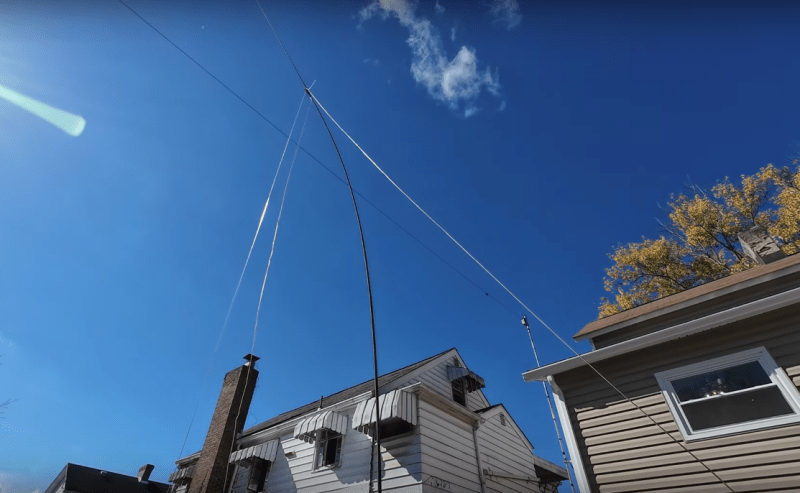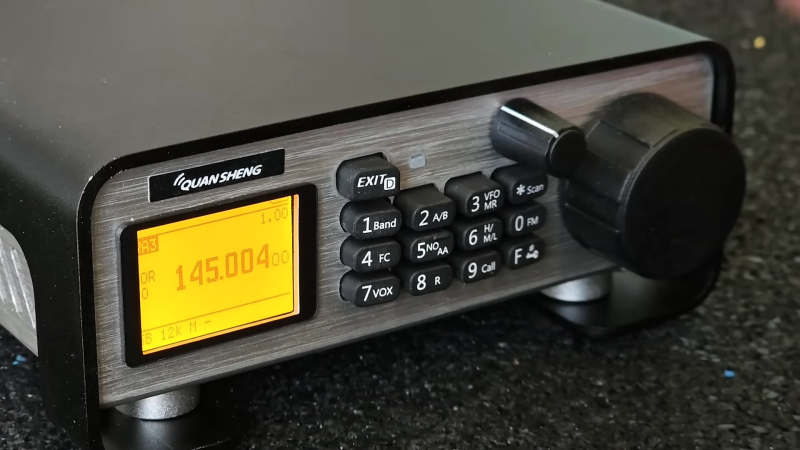Random Wire Antenna Uses No Wire

Ideally, if you are going to transmit, you want a properly-tuned resonant antenna. But, sometimes, it isn’t practical. [Ham Radio Rookie] knew about random wire antennas but didn’t want a wire antenna. So, he took carbon fiber extension poles and Faraday tape and made a “random stick” antenna. You can check it out in the video below.
We aren’t sure what normal people are doing with 7-meter-long telescoping poles, but — as you might expect — the carbon fiber is not particularly conductive. That’s where the tape comes in. Each section gets some tape, and when you stretch it out, the tape lines up.
We aren’t sure how these poles are constructed, but the video claims that the adjacent sections couple capacitively. We aren’t sure about that as the carbon fiber won’t be very conductive, but it probably isn’t a very good insulator, either. Then again, the poles may have a paint or other coating along the surface. So without seeing it, it is hard to say what’s coupling the elements.
He admits this is experimental and there is more work to do. However, it seems cheap and easy to setup. The hardest part is tapping an M10 hole in the end cap to allow things to mount.
We suppose you could make your own tubes, but it hardly seems worth the trouble. If you cut or drill this stuff, you might want to take precautions.

